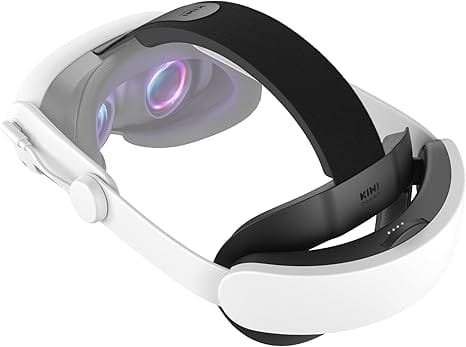Virtual Reality Therapy: How Technology is Revolutionizing Mental Health Treatment

Introduction to Virtual Reality Therapy (VRT)
Virtual Reality Therapy (VRT) represents a significant advancement in mental health treatment, employing cutting-edge technology to create immersive therapeutic experiences. At its core, VRT utilizes virtual reality to simulate environments that can evoke specific responses in patients, providing a safe space for them to confront and navigate their mental health challenges. This innovative approach has gained traction among both practitioners and patients, promising a new avenue for treatment where traditional methodologies may fall short.
The fundamental concept of VRT lies in its ability to transport individuals into customized virtual environments. This is achieved through VR headsets and software that enable users to engage with simulated scenarios, fostering exposure therapy for phobias, post-traumatic stress disorder (PTSD), anxiety disorders, and social skills development. By systematically exposing patients to their fears or triggers within a controlled setting, therapists can guide them towards desensitization and coping strategies, ultimately leading to improved mental resilience.
The surge in popularity of VRT can be attributed to its unique capacity to create immersive experiences that traditional therapies often lack. Studies indicate that patients tend to respond positively to these interactive environments, reporting more significant engagement and openness during therapy sessions. As mental health practitioners continue to explore the integration of VRT into clinical settings, its potential for enhancing therapeutic outcomes becomes increasingly evident.
Moreover, VRT addresses various mental health challenges, including anxiety, depression, and phobias, while also serving as an effective tool for rehabilitation in patients recovering from trauma. As technology evolves, the application of virtual reality in therapeutic contexts will likely expand, providing new opportunities for individuals seeking effective mental health support. The future of VRT not only emphasizes technological advancement but also signifies a paradigm shift in how mental health care can be delivered in an increasingly digital world.

Applications of VRT in Treating Mental Health Conditions
Virtual Reality Therapy (VRT) has emerged as a transformative approach in the treatment of various mental health conditions, including phobias, Post-Traumatic Stress Disorder (PTSD), and anxiety disorders. By immersing patients in controlled, virtual environments, therapists are able to facilitate exposure therapy that fosters healing and coping mechanisms. This approach allows for a tailored experience that addresses the unique needs of each patient.
In the case of phobias, VRT provides a safe platform for patients to confront their fears gradually. For instance, an individual with a fear of heights may be guided through a virtual landscape that simulates high altitudes. With the support of a therapist, the patient can practice coping strategies in real-time, helping to desensitize their fears. This method has shown great promise, with studies indicating significant reductions in phobic responses following VRT sessions.
For individuals suffering from PTSD, VRT offers a means to revisit traumatic experiences in a controlled manner. This technique facilitates the processing of traumatic memories while imposing a sense of safety. An example includes veterans who have experienced combat-related PTSD; they can engage in scenarios reminiscent of their experiences without the visceral dangers they faced in reality. The presence of a therapist is crucial in these sessions, guiding the patient’s emotional responses and helping them develop effective coping skills.
Anxiety disorders also benefit from VRT, as the technology allows for gradual exposure to anxiety-provoking situations. Patients struggling with social anxiety can practice interactions in simulated social settings, honing their skills in a non-threatening environment. Through these interactions, they can build confidence and resilience, ultimately applying these skills to real-life situations.
Overall, the personalized and iterative nature of VRT makes it an effective tool for treating mental health conditions. By combining immersive technology with therapeutic guidance, patients can confront their fears, process their trauma, and learn healthier coping mechanisms in a supportive environment.
Scientific Research and Effectiveness of VRT
Virtual Reality Therapy (VRT) has emerged as a notable approach in the treatment of various mental health conditions, supported by an expanding body of scientific research. Multiple studies have investigated its effectiveness, demonstrating significant results across a range of disorders, including post-traumatic stress disorder (PTSD), anxiety, and phobias. For example, a randomized controlled trial published in *The Journal of Nervous and Mental Disease* found that patients with PTSD showed a substantial reduction in symptoms after participating in VRT sessions, compared to those receiving traditional therapy alone. This suggests that VRT can serve as a complementary or alternative method, potentially leading to better patient outcomes.
Another study in *Psychological Medicine* focused on individuals suffering from specific phobias, reporting that exposure to virtual environments resulted in notable decreases in fear responses. These results underscore the argument that VRT not only enhances therapeutic engagement but also fosters a more controlled atmosphere for patients to confront their fears without immediate real-world consequences. This controlled setting avails exposure therapy elements in a safe and manageable manner, thus promoting faster recovery times.
Furthermore, a systematic review in *Behaviour Research and Therapy* assessed the long-term effects of VRT, showing a sustained improvement in anxiety symptoms post-treatment. This evidence illustrates that VRT can offer lasting benefits beyond immediate symptom alleviation, providing deeper insights into patients’ psychological challenges. As technology advances and VR applications expand, the importance of rigorous scientific evaluation becomes evident. Continued clinical trials and research are crucial for validating the effectiveness of VRT, ensuring that it is not merely a passing trend but rather a legitimate avenue for mental health treatment. Ongoing research will help refine these technologies, paving the way for personalized and impactful therapeutic strategies.
Challenges and Future of VRT in Mental Health Treatment
While Virtual Reality Therapy (VRT) holds significant promise for mental health treatment, several challenges and ethical considerations need to be addressed. One of the primary limitations is accessibility. Although technology has advanced considerably, access to VR equipment can remain a barrier for many individuals, particularly those in low-income areas or rural communities. This gap poses a risk of widening the existing disparities in mental health care, emphasizing the need for cost-effective solutions and broader distribution of VR tools.
Another challenge is the potential for over-reliance on technology in therapeutic settings. While VRT can serve as a valuable adjunct to traditional methods, it is crucial that it does not become the sole approach for mental health treatment. Practitioners must ensure that patients receive comprehensive care that considers individual needs, rather than solely depending on technological advancements. The balance between innovative treatments like VRT and conventional therapies is essential for optimal patient outcomes.
Ethical concerns also arise, particularly in relation to patient data privacy and informed consent. The immersive nature of VR experiences often requires the collection of sensitive data, prompting questions about how this information is stored, used, and shared. Ensuring robust privacy protocols and obtaining informed consent are imperative to foster trust between patients and healthcare providers.
Looking ahead, advancements in VRT technology promise to enhance its efficacy and integration into mental health care systems. Potential developments include more user-friendly devices, personalized therapy sessions tailored to individual experiences, and compatibility with other treatment modalities such as cognitive-behavioral therapy. As technology evolves, ensuring that VRT is accessible, ethical, and effectively incorporated into comprehensive treatment plans will be vital for promoting long-term improvements in mental health outcomes.





